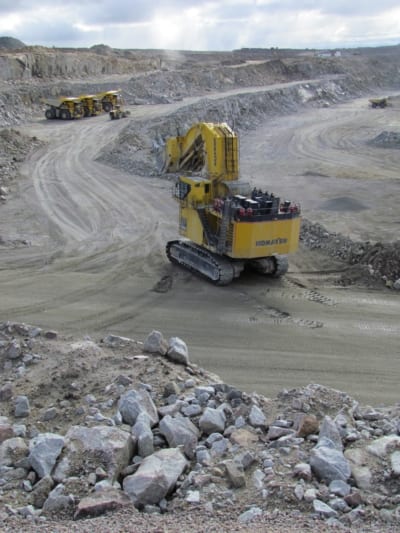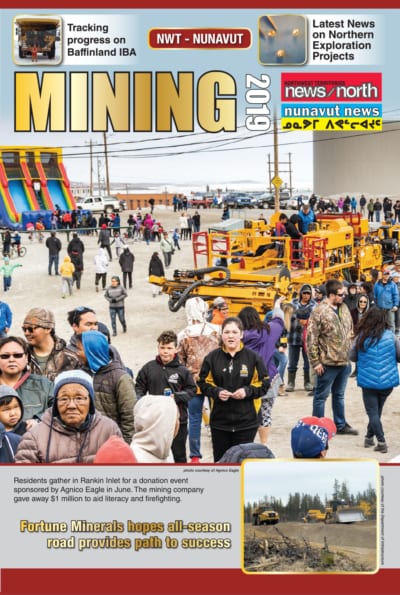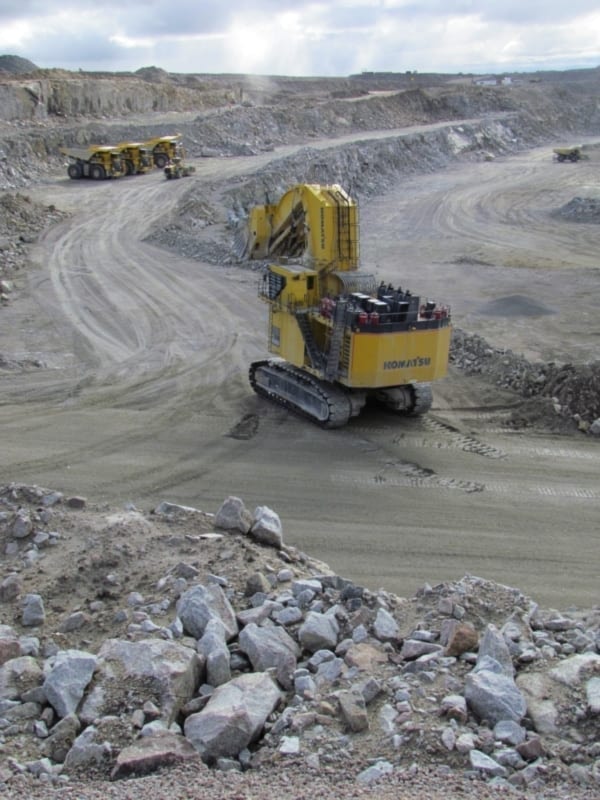The energy-intensive process of mining expends large volumes of carbon dioxide, and De Beers is seeking a way to put that carbon into processed rock, or tailings, rather than the atmosphere.
“Think of it like a fine sand. The minerals in that find sand react with the carbon dioxide to form carbonate minerals, so they turn the carbon into a solid form,” explained lead researcher Greg Dipple, a professor in the Department of Earth, Ocean and Atmospheric Sciences at the University of British Columbia. “The carbon dioxide is going from a gas to a solid mineral and that's where the real stability and safety of it comes from.”

The process has been demonstrated in a laboratory under controlled conditions in as little as two to three days, although it can take up to almost a year. The crucial factors are time and cost, said Dipple.
“You can't afford to have five million tonnes of tailings reacting for 300 days,” he said.
There's a high degree of variability within a deposit as to how quickly, or slowly, the geochemical reaction occurs and the real test is to replicate it successfully on the scale of a mining operation, he acknowledged.
Initial results have shown promise. Dipple and his team travelled to the Gahcho Kue mine, 280 km northeast of Yellowknife, this past summer and carried out an experiment approximately 100 times the size of what was performed in the lab. It was done in a basin within metres of the ground's surface.
“We learned a lot. We're still in the process of collecting all the data and we have to go through reporting with De Beers as well, but we're very happy with the way things went this summer” the professor said, adding that they're aspiring to return to the mine again next year to expand upon their trial by another factor of 100. “Within a couple of years we'll have clear indications of what kind of approaches will be economically feasible.”
Natural Resources Canada has contributed a $675,000 grant towards the research through it's Clean Growth Program.
“The research offers great opportunity as the carbon storage capabilities of kimberlite processed while mining is such that only 10 per cent of the rock's storage potential would need to be harnessed to capture the carbon dioxide emissions of a whole mine,” De Beers stated in a news release.
De Beers, which provided no further comment on the project when approached by NWT and Nunavut Mining, is also conducting similar research at its mining interests in Botswana.

The experiment comes as carbon taxes have taken effect in Canada and are scheduled to rise incrementally each year through 2022. Agnico Eagle estimates that carbon taxes in Canada will cost the company $48 million over the next 14 years.
Tom Hoefer, executive director of the NWT and Nunavut Chamber of Mines, is keeping an eye on how the carbon storage experiment unfolds.
“I think we're all hopeful but we'll have to wait for the results of the research,” Hoefer stated.
Canada emits close to 700 million tonnes of carbon each year. Nunavut produced 0.6 million tonnes of carbon in 2017 while the NWT was responsible for 1.3 million tonnes – the diamonds accounted for approximately 33 per cent of that, according to Environment and Climate Change Canada.
